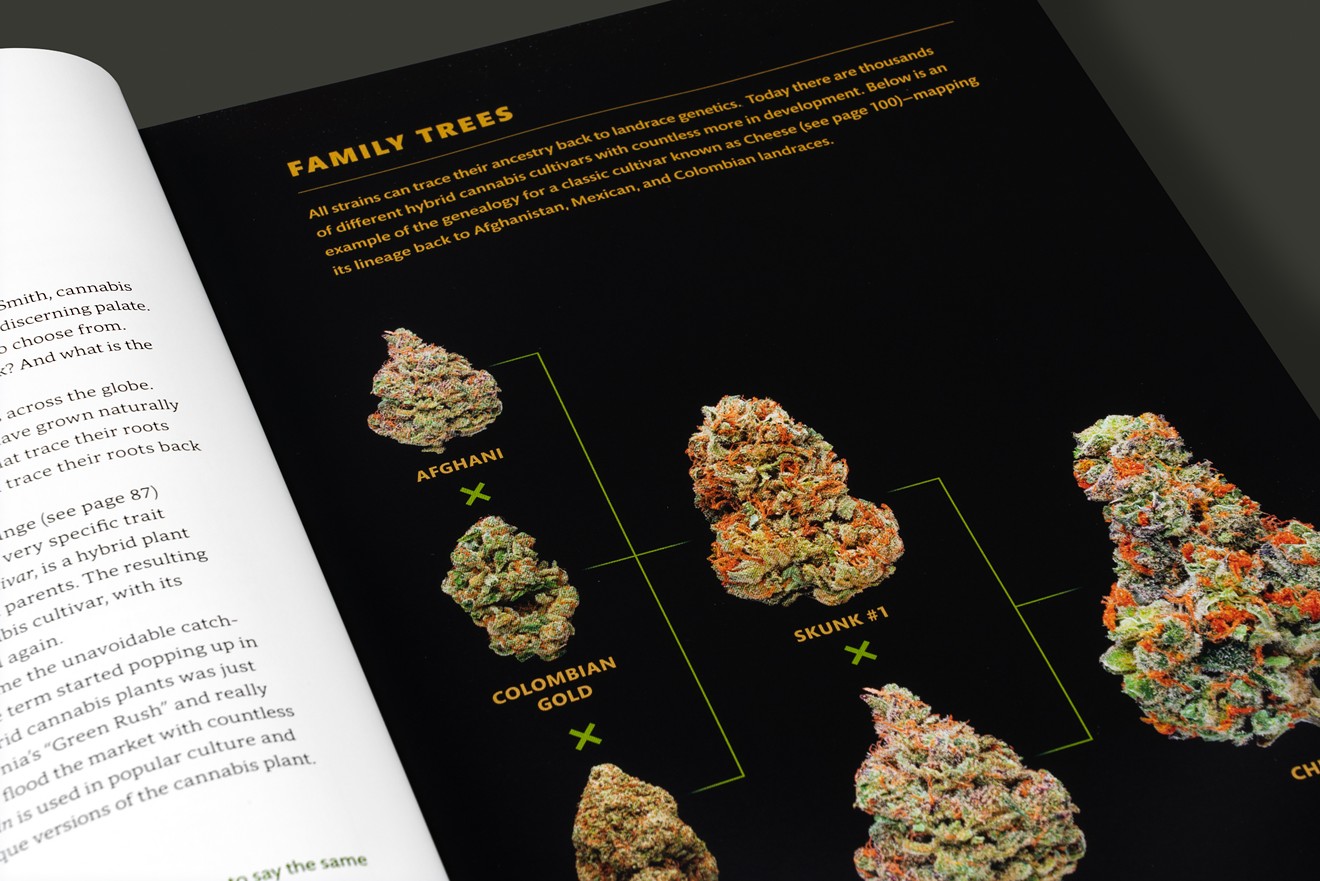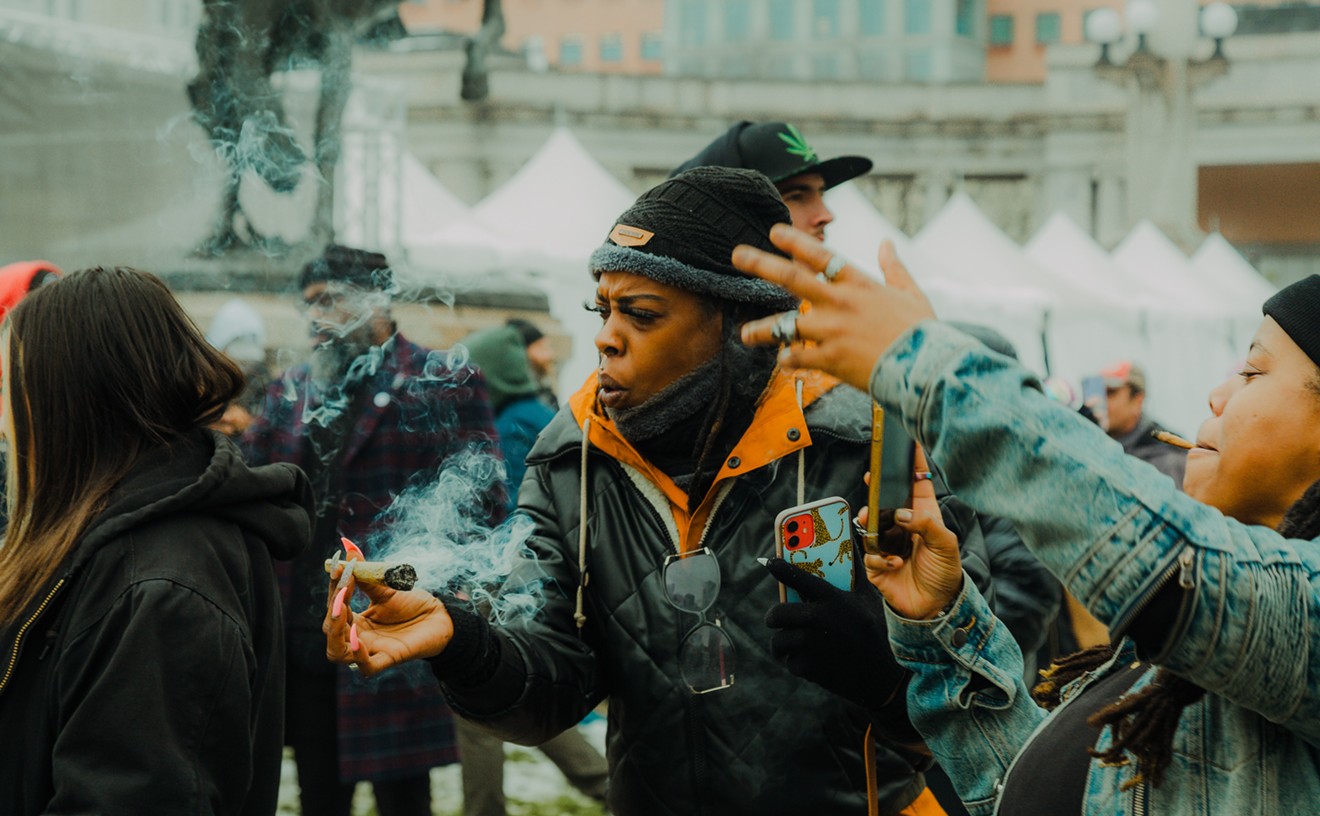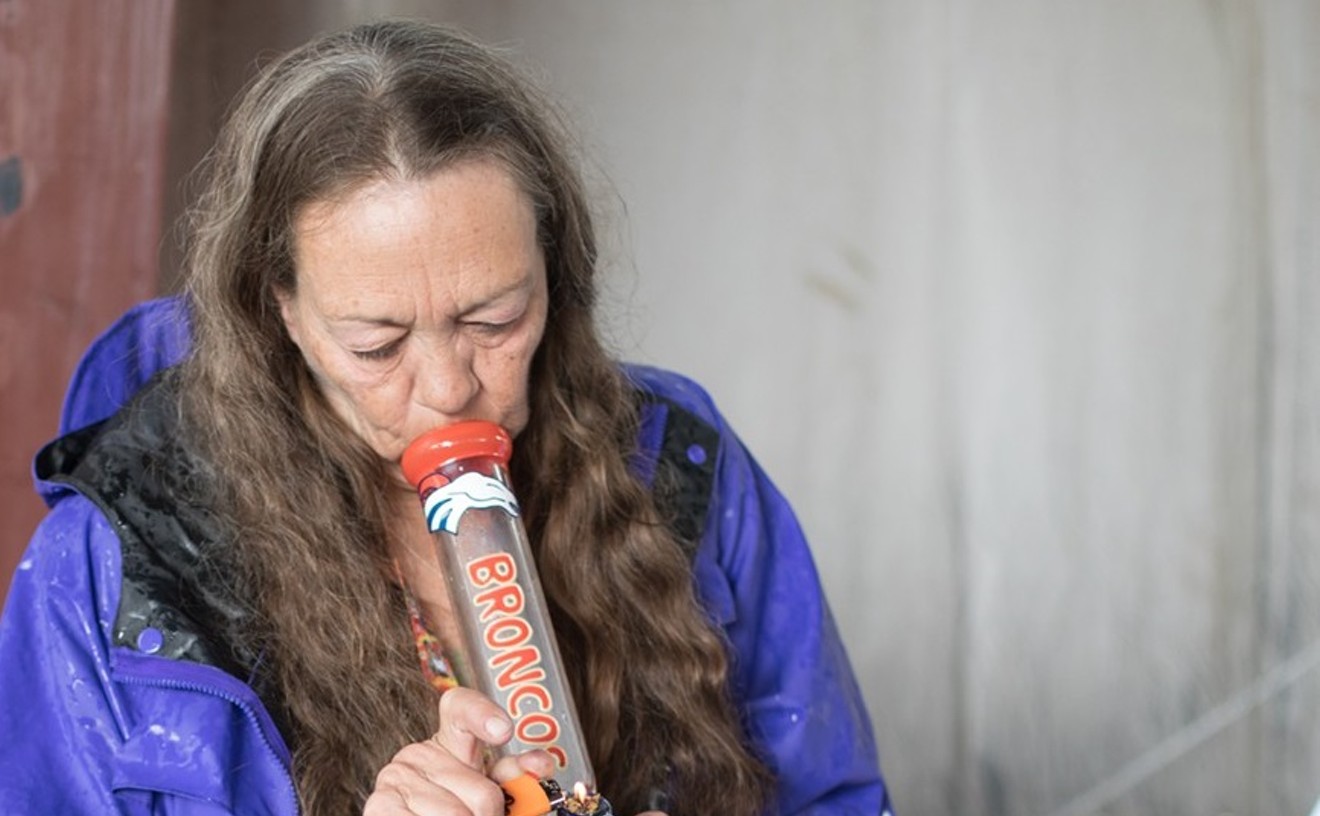Learning about the background and characteristics of cannabis strains can be a chore. Histories are muddled, undocumented and often disputed, and the present isn't much clearer, because the smells, looks and flavors of strains can vary from grower to grower.
Author Dan Michaels and photographer Erik Christiansen took on these challenges and more while creating HIGHER: The Lore, Legends, and Legacy of Cannabis, a stylistic breakdown of 100 popular strains. Full of photos and cannabis factoids, HIGHER isn't quite a field guide (though Michaels and Christiansen have made one of those, too), but the book will help readers identify specific bud qualities and varieties, and it makes a cool statement to visitors who are judging your coffee table. To learn more about the evolution of weed and how hard it is to chronicle, we caught up with Michaels and Christiansen to talk pot.
Westword: Just how far has cannabis come over the past several decades, when buds were more larfy and loose? Would dispensary shoppers be surprised at what real landraces look like?
Dan Michaels: A lot has certainly changed over the past fifty years. I think the most important thing to think about when seeing those images from the ’70s is that proper trimming, curing and storage is of utmost importance today when you’re dealing with buds, but that wasn’t always the case back then. It’s also important to remember that hash and hashish, not flower, was what most people around the world were smoking decades ago. Smoking flower was not the norm, so growers who wanted to sell bags of bud were still trying to figure out the whole process once they harvested their plants. They didn’t really know what bag appeal was yet.
As far as the genetics go, the landraces back then are the same as they are today. We showcase several important landraces in HIGHER, and they are some of the most beautiful and interesting plants you will see in the book. The only difference today is that cultivators now understand the entire growing process, from seed germination to flowering through harvesting times to drying, trimming and curing. This is what makes for such great bag appeal when looking at the finished product today compared to the grass from the ’70s.
How hard is it to home in on a strain's backstory? I imagine the history can be muddled for a lot of them.
Michaels: It honestly depends on the strain. A lot of today’s modern hybrids have a pedigree and lineage that’s well documented, and their backstory is often well known and a big part of why they are so popular. On the flip side, many of the classic cultivars that date back as early as 20 to 25 years ago can definitely have a hazy history full of lore and mystery. Because of this, it was important for us to really do our research and fact-checking. We spoke directly with those involved with either the breeding or cultivation of those original varieties to make sure we got the record straight. Even still, stoners are very passionate about their favorite strains, so you will always hear some details differently depending on who’s telling the story. In a way, I think it’s a fun part of the backstory, and for some strains, we’ll just never know for certain.
How much do the qualities of a strain fluctuate from grow to grow or state to state? Is that something you encountered while researching or writing the book?
Michaels: One main thing to consider is the genetics themselves. If a new cultivator in a freshly legal state wants to grow, for example, Super Lemon Haze, they have to wade through tons of seed companies selling seeds falsely labeled “Super Lemon Haze." Unless they get the cut from a trusted source, it’s not going to be actual Super Lemon Haze.
There’s also the factor of phenos. A grow in every state could buy the same seeds from a reputable source like Humboldt Seed Company, but those seeds could have potentially different looks and smells due to phenotypic differences. Qualities like cannabinoid profiles and potency, plant structure and color, terpenes and aromas can all definitely fluctuate from seed to seed and grow to grow. Different environmental factors (climate, soil and temperature), growing conditions (light source, nutrients and harvest time), curing (trimming, drying time, temperatures and age) and even storage can all directly affect the desirable traits of the same strain. Thorough analysis and a proper evaluation process of visual and sensory variables are extremely important in order to maintain consistency across different grows, especially now that multi-state operators have become so prevalent.
By your estimation, what are the world's most popular strains?
Michaels: This one is super tricky based on your location. For example, HIGHER photographer Erik Christiansen is most familiar with the West Coast strains, but when he was in Amsterdam ten years ago, Haze was the most popular by far; popular California strains like OG Kush were nowhere to be found. Similarly, in Canada five years ago, they had plenty of strains with OG terp profiles, but those strains weren’t called OG. I would say the world's most common strains are West Coast U.S. strains, because that’s where the prolific seed companies are based and where the hype strains are coming out of. Of those, OG Kush and its plethora of famous phenotypes are probably the most popular and pervasive. Although its history and lineage are heavily debated, today’s modern version of OG Kush spread through California like wildfire in the late 1990s and has become synonymous with classic West Coast flavors. Combine that with its powerful effects, and you’re left with a legendary strain that’s still highly sought after even in today’s saturated market.
How about the world's most influential? What landraces have had the most impact on what we smoke today?
Michaels: I think landraces like Afghani and Hindu Kush have influenced the way cannabis is currently being grown indoors, while landraces like Panama Red and Acapulco Gold created the first real brand-name notoriety with their uplifting, happy head high and unique bag appeal. Then along came strains like Skunk #1 and Original Haze, and these hybrids showed the world what can be accomplished in terms of selective breeding. And then there’s Chem Dog. Simply put, if you look into the lineage of most of today's most popular hybrids, they wouldn’t exist without this strain's DNA.
Are there any strains, genetics or Colorado-centric impacts mentioned in your book?
Michaels: Absolutely! Colorado has played and continues to play a huge role in the advancement of cannabis in the United States, and Denver is the model for recreational cannabis legalization for major American cities. One of my favorite plant profiles is from Colorado breeders Cannarado Genetics, and the strain is called Fatso, also known as Fatso OG. It’s a very treasured and beautiful plant that’s earned quite a reputation among growers and smokers alike. We also feature their other famed genetics: Grape Pie and Sundae Driver. Colorado grower Dank by Pank also grew out the spectacular specimen of the Purple Punch plant that’s featured in the book.
Extracted versions of cannabis are becoming very popular, especially live resin or rosin. How much has extraction impacted the strains we buy in today's market?
Michaels: Not all strains are commercially suitable for extraction. Today breeders are strategically creating new hybrids intended for commercial extractions. These cultivars are often referred to as “washers,” because they have the capacity of producing the highest output of hash when washed during the ice-water extraction process used when producing high-quality rosin products. Many plants yield only 2 percent of their fresh-frozen weight in hash, but a good washer will produce over 4 percent or even higher after extraction, thanks to their resinous and dense capitate-stalked trichome growth. Their large, firm heads and skinny neck allow the bulbous top to easily pop off during washing for optimal hash outturn.
Whether it's Cookies strains, fruity weed or garlic-forward flavors, what strain qualities have consumers gravitated toward over time? Any trends you see coming in the future?
Michaels: I believe consumers are gravitating first and foremost toward new flavors, and rightfully so. There was a time when THC potency was the main focus behind a strain's popularity, but at the end of the day, terpene profiles and their diverse aroma and flavor combinations have become the driving force behind tried and true varieties. With education like our book HIGHER, customers are learning more about the entourage effect and realizing how much terpenes can contribute to the effect of a strain. Consumers can now pick and choose between classic dank and pungent profiles, vibrant fruity and tropical aromas, delectable dessert-like palates, new and rare exotics, or anything in between. It’s truly a pot paradise in terms of how many options are out there today.
You're on a desert island and can only bring two strains. Which two are you bringing, and why?
Michaels: This is quite a dilemma, and I could spend days comparing and contrasting different varieties for this situation. But without overthinking this one too much, I’d have to select something upbeat like Mimosa to fill my days with good vibes and mental motivation, and then a go-to relaxing strain like Bubba Kush for when I need to chill out and get numb.
Erik Christiansen: For me, it would have to be Zkittlez and probably a Haze variety. You’d get two very distinct flavor profiles [as well as] one uplifting strain and one nighttime strain. After enough smoke signals, rescue should be imminent, and you can hit a dispensary once you’re back on the mainland.
[
{
"name": "Air - MediumRectangle - Inline Content - Mobile Display Size",
"component": "12017618",
"insertPoint": "2",
"requiredCountToDisplay": "2"
},{
"name": "Editor Picks",
"component": "17242653",
"insertPoint": "4",
"requiredCountToDisplay": "1"
},{
"name": "Inline Links",
"component": "18838239",
"insertPoint": "8th",
"startingPoint": 8,
"requiredCountToDisplay": "7",
"maxInsertions": 25
},{
"name": "Air - MediumRectangle - Combo - Inline Content",
"component": "17261320",
"insertPoint": "8th",
"startingPoint": 8,
"requiredCountToDisplay": "7",
"maxInsertions": 25
},{
"name": "Inline Links",
"component": "18838239",
"insertPoint": "8th",
"startingPoint": 12,
"requiredCountToDisplay": "11",
"maxInsertions": 25
},{
"name": "Air - Leaderboard Tower - Combo - Inline Content",
"component": "17261321",
"insertPoint": "8th",
"startingPoint": 12,
"requiredCountToDisplay": "11",
"maxInsertions": 25
}
]












